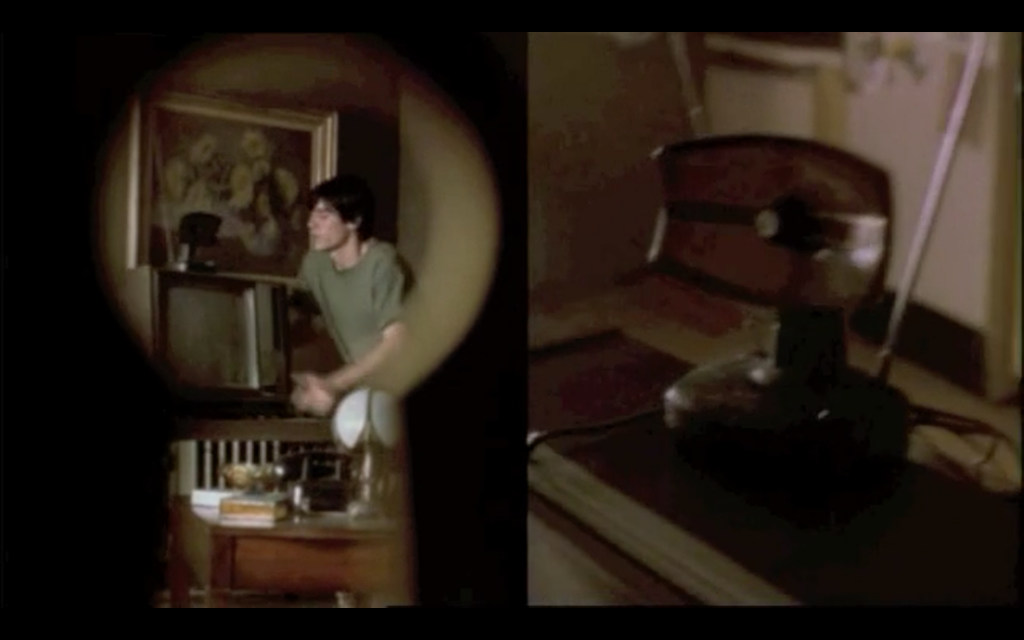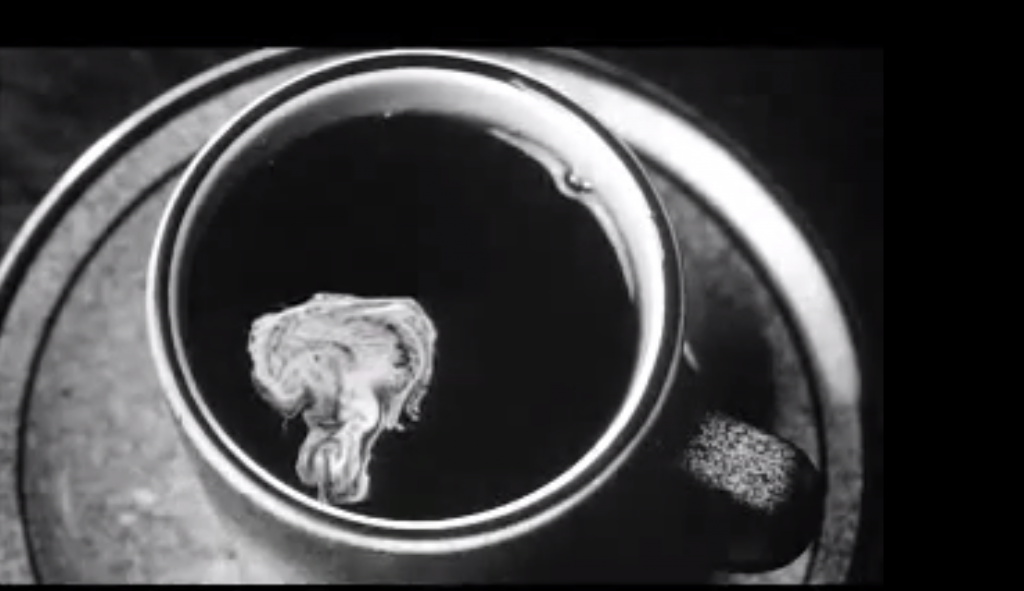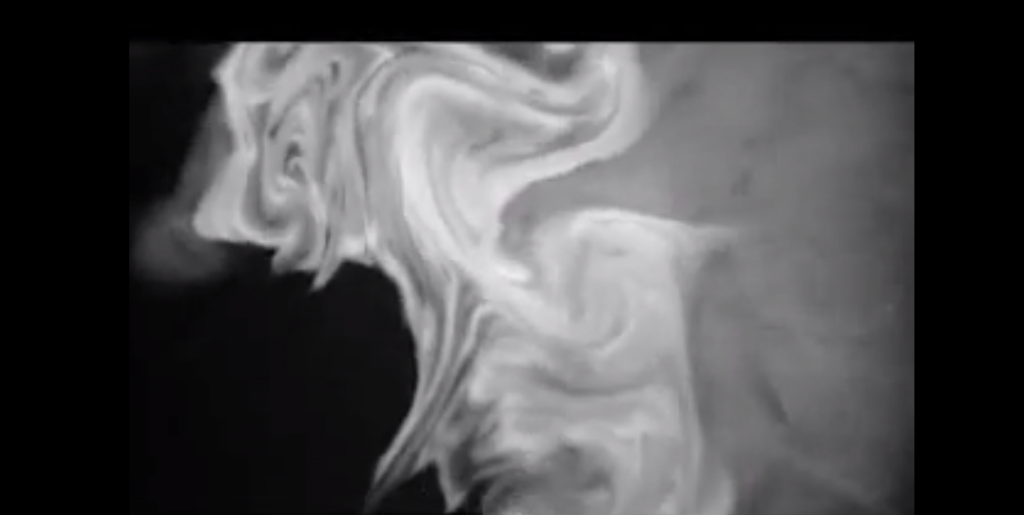Requiem for A Dream (Darren Aronofsky, 2000, USA)
Scene 1
The opening scene to Darren Aronofsky’s Requiem for a Dream establishes characters, thematic ideas and stylistic approaches that are continued throughout the film. Aside from the very first and last shots of this scene, the entire sequence utilises a split screen composition. This layout is repeated several times throughout the film, enabling two equal perspectives to be portrayed on screen at the same time. This can be seen as a motif for the film, which is essentially about four different people’s perspectives on addiction and obsession. Both of these concepts are also commonly investigated in other Aronofsky films, such as Pi (1998) and Black Swan (2010).
The opening shot of Requiem for a Dream is a shaky, fast-moving, hand held camera shot, which initiates the restlessness of the scene. The camera tracks backwards as Sara (the mother) runs away from Harold (her son) and begins to lock herself in her cupboard. Meanwhile, the camera pans past the doorway, turning the right side of the screen dark. This movement has enabled the editor to transition seamlessly into the split screen format. The audience can now witness what is going on inside the cupboard with Sara and what is happening in the lounge room with Harold, both being framed in mid closeups. This intimate framing creates an intensely emotional atmosphere, as viewers can see both characters’ expressions up close, emphasising Sara’s fear and Harold’s anger.
As the left side of screen changes to a stationary point of view shot through the cupboard’s key hole, the right side of screen tracks Harold as he attempts to steal his mother’s TV set. Instead of having two different shots on either side of the same frame which could potentially become confusing for audiences, Aronofsky has essentially just repeated the same shot, but from different ‘perspectives’. This highlights the action and also simplifies the scene for viewers as it means that even if they are only concentrating on one side of the split screen, they are not going to miss what is happening in the story. A close up of the TV aerial (seemingly from Harold’s point of view) is also shown on the right side of frame to convey the the desperation of Harold’s situation: this television is clearly old and worn, yet Harold is still willing to steal it from his mother in order to pawn it for cash which he will spend on heroin.
This focus on the aerial also draws attention to the object falling off the television in the next shot, which the audience can view from a further distance through the key hole, as if seeing through Sara’s eyes. As Harold goes to catch the aerial, the back of his head is framed in a mid closeup on the right of screen and the audience hears him yelling at his mother. The left side of screen cuts to Sara’s reaction shot: the light from the key hole spotlights her eyes in the dark, as she looks down, almost in tears. This shot of the side of her face is framed extremely tightly, which mirrors this idea of Sara quite literally being confined to the small space of the cupboard, as well as figuratively being trapped in the cycle of Harold’s heroin addiction. (The audience later discovers that Harold frequently pawns his mother’s television and she buys it back every time).
The right side of screen then cuts to a closeup of the chain which is keeping the television attached to the radiator in the wall. These extreme closeups are a trademark of Aronofsky’s films, which regularly weave many quick shots of extreme closeups together to draw the viewer’s attention to particular things, rather than covering a sequence in one long take or wide shot. His first feature film Pi also has a number of sequences that a ‘told’ through a rapid montage of extreme closeups, frequently cutting away to things like coffee cups, gold fish, newspapers and keyboards in order to illustrate a point.
Maximillian Cohen in Pi discovers that everything in nature can be explained through maths, even the seemingly random formations of milk being poured into coffee and cigarette smoke being blown into the air. The spiral-like shapes are highlighted by the extreme closeup framing.
The right side of screen then cuts to a bouncing hand held camera shot from Harold’s perspective as he marches towards the cupboard. On the left side of screen Aronofsky quickly returns to the key hole view of Harold thumping towards his ‘ma’. This shot, paired with the consecutive extreme closeup shot of Sara’s eyes, evokes a sense of fear and suspense as the audience wonders whether she is safe from her aggressive son. The right side of screen cuts to a mid closeup of Harold yelling abuse at the door, while the left side of screen lingers on Sara’s anxious face. The slight hand held camera shake of both ‘screens’ creates a feeling of unease as Sara decides whether or not to give into her son’s requests. The right side of screen then cuts to an extreme closeup of a key being passed under the door to Harold, as Sara bows her head on the left side of screen. The hand held camera tilts down to follow Harold as he picks the key up and the left side of screen returns to the key hole view of the lounge room, this time without Harold in frame. Both screens then exhibit each character side on; however, the shot of Sara is left on screen for much longer than Harold’s and her face is also framed much closer. At this point the camera framing and editing suggests that viewers should be sympathetic towards Sara whose despondent expression is the focal point of the shot.
The left side of screen continues to flip back and forth between the closeup of Sara and her view through the key hole; while the right side of screen switches back and forth between a mid closeup of Harold and his view of the door. The camera follows Harold over to the television at a fast pace, as he unlocks the chain from the wall. The unlocking of the padlock is magnified by framing the object in an extreme closeup on the right side of screen, while on the left screen Sara closes her eyes tight in reaction to the sound of the lock clicking open. The hand held camera then follows Harold as he rolls the television set towards the cupboard. The tone of the scene changes dramatically at this point as Harold begins to speak in a soft, apologetic tone towards his mother.
Up until this moment in the scene, the cuts are rather fast and the movements of the camera unsteady, which help to intensify the action on screen. The signature music of an Aronofsky film is also layered over the dialogue to increase this effect. The opening sequence begins with a slightly off beat overture of string instruments, which slowly transforms into the techno/piano motif of the film. Aronofsky has consistently worked with music composer Clint Mansell to create foreboding soundtracks like that of Pi, The Wrestler (2008), Black Swan and Noah (2014). Mansell often uses a string instrument and techno beat combination which builds towards a climax. In Requiem for a Dream, the eery piano riff comes in at the point where Harold shows his more sensitive side: he quietly tries to coerce his mother out of the cupboard. During this closeup shot of both characters, the movement on screen almost stops altogether. The music seems to conjure feelings of despair and sorrow. Both characters refrain from speaking for a moment as Harold waits to see if his mother will come out. Aronofsky allows the audience to have a god-like perspective over this scene; as a result, they are able to see Sara is crying inside the cupboard.
Once Harold believes he has waited long enough, he turns to leave, rolling the television out and disappearing to the left side of the right screen. The left screen is then ‘pushed’ to the right, so that it now encompasses the whole frame again. The audience is left with a closeup of Sara in low key lighting, still huddling inside the cupboard as she speaks to her deceased husband, assuring him that everything will turn out ‘alright’ in the end. This dark finish to the scene foreshadows the bleak ending of the film. Overall this scene works to showcase the idea that addiction not only causes harm to the individual, but to others as well: a theme that underpins the entire narrative.



